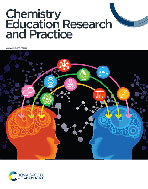ChemSims: using simulations and screencasts to help students develop particle-level understanding of equilibrium in an online environment before and during COVID
Abstract
Equilibrium is a challenging concept for many, largely because developing a deep conceptual understanding of equilibrium requires someone to be able to connect the motions and interactions of particles that cannot be physically observed with macroscopic observations. Particle level chemistry animations and simulations can support student connections of particle motion with macroscopic observations, but for topics such as equilibrium additional visuals such as graphs are typically present which add additional complexity. Helping students make sense of such visuals requires careful scaffolding to draw their attention to important features and help them make connections between representations (e.g., particle motion and graphical representations). Further, as students enter our classrooms with varying levels of background understanding, they may require more or less time working with such simulations or animations to develop the desired level of conceptual understanding. This paper describes the development and testing of activities that use the PhET simulation “Reactions and Rates” to introduce the concept of equilibrium as a student preclass activity either in the form of directly using the simulation or guided by an instructor through a screencast. The pre-post analysis of the two most recent implementations of these activities indicates that students show improved understanding of the core ideas underlying equilibrium regardless of instructor, institution, or type of instructional environment (face to face or remote). We also observed that students were more readily able to provide particle level explanations of changes in equilibrium systems as they respond to stresses (such as changes to concentration and temperature) if they have had prior course instruction on collision theory. Lastly, we observed that student answers to explain how an equilibrium will respond to an applied stress more often focus on either initial responses or longer-term stability of concentrations, not on both key aspects.


 Please wait while we load your content...
Please wait while we load your content...